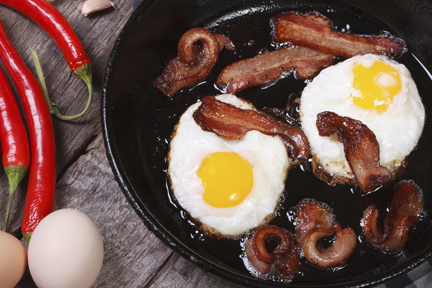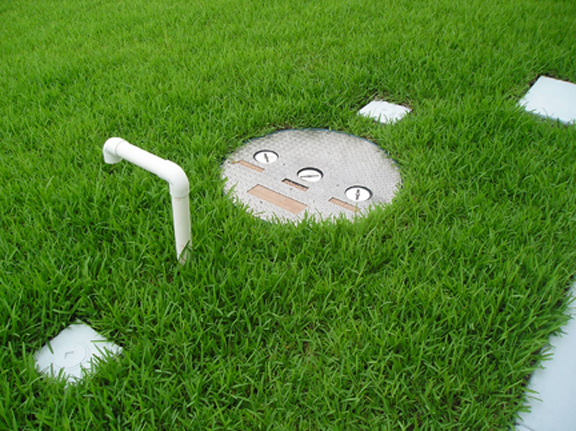A primer on commercial kitchen FOG waste
- Jun 16, 2015
It’s not very often that wastewater system workers are hailed as heroes in the headlines around the world. But in August 2013, that’s what happened.
News media around the world picked up the story of London’s ‘fatberg,’ a bus-sized, 33,000-pound mass of fats, oils and grease that had clogged an 8-foot diameter sewer line.
The English newspaper The Guardian reported:
“A sewage worker has become an unlikely hero after taking three weeks to defeat a toxic 15-tonne ball of congealed fat the size of a bus that came close to turning parts of the London borough of Kingston upon Thames into a cesspit.”
Although it might be nice to be called a hero, the London maintenance workers got that title after three weeks of using high-powered water jets to clear the mass. That work was almost certainly not nice.
A spokesman for the wastewater system described this kind of blockage as “a heaving, sick-smelling, rotting mass of filth and faeces. [The odor] hits the back of your throat, it’s gross.”
In other words, you don’t want a fatberg – even a little one – in your community. That fatberg, and thousands of similar obstructions in sewer systems around the world are the result of accumulating fats, oil and grease from kitchens.
So what makes kitchen waste so potentially destructive and what can a pretreatment coordinator do about it?
What is FOG?
First, let’s start with some basics.
Effluent from kitchens — especially commercial kitchens in restaurants, dining halls, cafeterias and the other commercial food service establishments — often contain leftover fats, oils and grease from cooking.

These include a wide variety of fats used in commercial kitchens: vegetable oil, bacon grease, fats in heavy creams and sauces, and more. Though technically these substances are very similar chemically, the term “grease” usually refers to solidified fats from cooking and cleaning, while “oils” refers to liquid fats.
These fats make their way into the wastewater lines and, sometimes, sewer systems from a number of sources within the kitchen. These sources include dishwashing sinks, woks, deep fryers and oven range hoods.
Grease can get flushed into sewer lines with water as dishes are washed, range hoods cleaned or deep fryers are empty. Although wastewater ordinances usually prohibit dumping grease and fat directly into drains or the sewer system, this may happen as well if kitchen staff are poorly trained or not properly supervised.
Impact of grease in wastewater systems
High levels of fats and oils create a number of problems for wastewater systems.
First, as the “fatberg” story indicates, grease can create serious problems in sewer lines. The fat accumulates in pipes over time, narrowing and eventually clogging lines. That in turn can lead to back-ups and expensive repairs.
The EPA, in a 2007 report to Congress, found that grease causes 47% of wastewater system blockages. In some places, it’s higher. Municipalities such as the City of Irving, Texas, frequently report grease buildup in pipes as the number one cause of Sanitary Sewer Overflows.
Though modern wastewater treatment plants are able to handle grease, high levels of fats and oils reduce the overall efficiency and effectiveness of treatment plants. Accumulated grease can also cause lift stations to malfunction.
If fats and oils are not adequately treated in the water, then they can contaminate streams, lakes and other bodies of water. In addition, sewer blockages caused by grease build-up can lead to ruptured sewer lines and the release of raw sewage into the environment.
Solutions for handling FOGs
Given their impact on sewer systems and treatment
plants, the best way to handle grease is to keep it out of the wastewater system in the first place. That means pre-treating commercial kitchen effluent before it enters the public sewer system.
Most wastewater ordinances require food service establishments to pretreat their kitchen effluent to remove fats, oils and grease. In North America, regulations typically require a grease interceptor to remove most of the fast, oil and grease on-site.

There are three main ways commercial kitchens can handle FOGs they produce:
1. Reduce the amount of fats and oils used in their food. Though the amount of grease will vary widely depending on the type of food being prepared, in reality few food service establishments are likely to change their menus merely to reduce grease levels their wastewater.
2. Intercept grease at its sources, such as three-compartment wash sinks, using a hydromechanical grease interceptor designed for that purpose. Our Big Dipper units are one example of this type of interceptor.
3. Install a central grease interceptor, through which all kitchen effluent flows, to trap most of the grease before it enters the public sewer system. Our high-capacity Trapzilla grease traps are used in this manner.
Most sewer ordinances require, at a minimum, that restaurants and other commercial kitchens install grease traps. Though traditional concrete grease traps have been used for more than a century, they have a number of problems that can make them problematic for restaurants.
More innovative solutions, such as smaller footprint grease traps and point-source grease interceptors, are becoming more common. This is particularly true in dense urban environments, where space is at a premium.
With rates of dining out increasing and commercial kitchens showing up in more buildings and more retail settings, wastewater systems will continue to face growing pressure from fats, oil and grease.
What you need to know
Though pre-treatment coordinators must deal with a wide range of potential pollutants, focusing on FOGs from commercial kitchens has the potential to have an outsized impact on water quality and wastewater system efficiency.
So what do pretreatment coordinators need to know?
What your local ordinances, state regulations and federal rules require. In addition to understanding the pre-treatment standards that commercial kitchens must meet, pretreatment coordinators also need to understand the options available for restaurants and other commercial facilities to meet those requirements.
Compliance expectations. In a community of size, it’s unlikely that all commercial kitchens will be compliant all the time. Understanding why food service establishments fall out of compliance, and being able to guide operators to help them get back into compliance quickly is likely to boost compliance. Educating commercial kitchen managers and workers can increase the effectiveness of your pretreatment program. Something as simple as a poster that can be mounted in a restaurant kitchen that reminds workers of the proper way to dispose of grease is helpful.
Understand pretreatment choices. There are a myriad of equipment choices and pretreatment strategies that commercial kitchens can use. By understanding these options, pretreatment coordinators can help ensure that facilities in their communities remain in compliance. Providing more options to food service establishments make it more likely they will comply, ultimately improving water quality and reducing treatment system costs.
Although grease and fat from cooking has been with us since our ancestors started using fire, managing it has only gotten more challenging as our food-service and wastewater systems have grown to an industrial scale.
However, a little knowledge is a powerful thing. Maybe it’s enough to head off the next fatberg.






